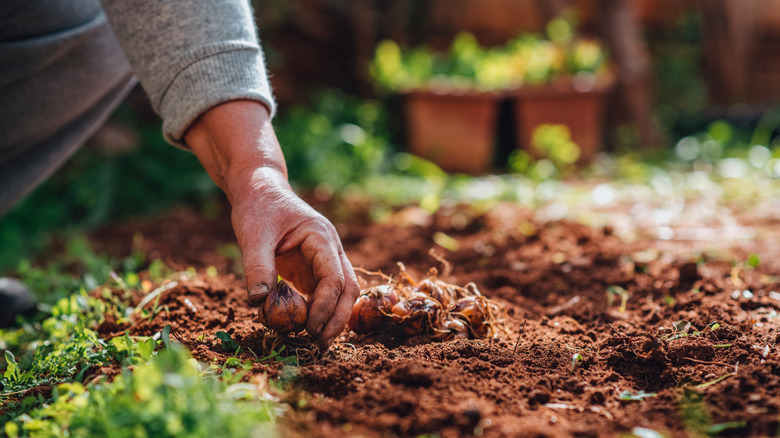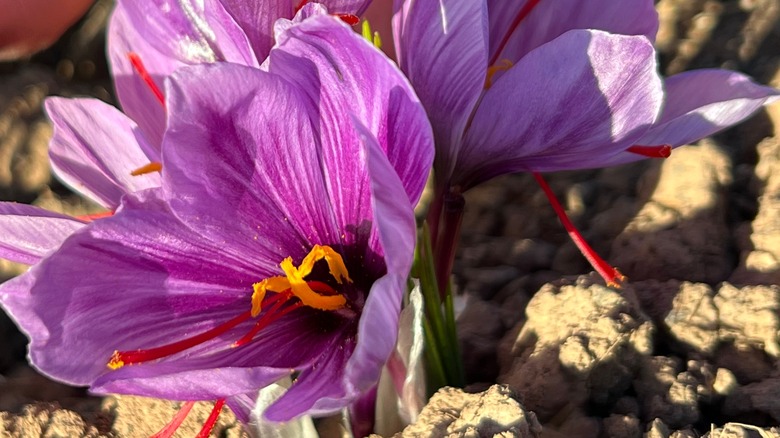Whether you enjoy the red hue saffron adds to rice or want to create a savory, long-cooked Moroccan dish, this is a spice you may want to have in your cabinet. The problem is, it’s expensive, costing around $10 per gram or much more. That’s because cultivating and harvesting it is a very labor-intensive process, with each saffron flower producing just three beautiful red threads. If you have a green thumb, you can grow it in your backyard instead and skip all that high cost.
The saffron crocus bulb (crocus sativus) is virtually sterile because it has three chromosomes. That means that it’s very difficult to find it growing in the wild. To grow saffron at home, you’ll likely need to start with bulbs purchased from a trusted resource since the plant doesn’t produce seeds. You’ll get the best results if you live in an area with cool, wet summers (or you plan to water often) and higher-temperature and drier summers.
The bulbs will not be stimulated to grow if the temperatures don’t warm up by late spring. In the U.S., most of the southern states offer favorable conditions, and you may be able to grow them in warmer portions of the north or in a greenhouse. They do best in hardiness zones 6 to 8.
Creating the ideal environment to grow saffron

To encourage the blooming of saffron flowers, you need the ideal environment, starting with a location that offers lots of sunlight. Be sure the soil is loosened and hill it slightly to encourage good drainage. The higher the quality of the soil, the better the access to valuable nutrients the plant needs. One way to get this is to add organic material to the soil before tilling the area. That could include broken down wood like mulch, straw, grass, and even egg shells and food scraps. Avoid any material that’s been treated with fertilizer or pesticides for the best results.
Once the soil is loose, plant your bulbs. Most often, it’s best to plant these at the start of fall as that gives them lots of time to become established. Crocus bulbs are smaller in size but don’t overdo it. Aim for no more than about 10 within a square foot of garden space, with less being more. The key here is that to produce enough saffron for your favorite dishes, you’ll need a good-sized crop. For that reason, you may want to dedicate a large space to your saffron flowers. More so, you’ll notice them multiplying each year with new flower development, so you’ll want ample space to dedicate to them in your garden.
Cultivating the growth of saffron

Once your bulbs are in the ground, put some extra care and attention into them. While they’re not super delicate plants, they do need at least six inches of water each month to remain healthy and growing. Monitor rainfall and add more moisture when needed. It will take a full year to see blooms beginning since this is a fall-blooming plant. However, expect to see some development in the early spring, including the growth of bright green foliage. Don’t mistake it for a weed. That foliage is what’s helping to give the bulb the nutrients it needs to thrive in the coming months.
Monitor soil conditions throughout the coming months. The crocus flower bulbs will rot if they remain saturated with water, and if you notice the leaves drying out, that’s going to limit saffron production as well. Typically, you won’t need to add a lot of fertilizer to these plants once you boost the soil’s quality when planting the bulbs during that first year, but it can be worthwhile to add more organic material into the soil surrounding them each fall.
Once the flowers bloom and grow, you’ll notice the small red threads of saffron sprouting from the center of the bulb, which will typically happen in late summer and fall. Pluck them, dry them out, and place them in an airtight jar until you’re ready to use them.



